#Programmatic ads
Explore tagged Tumblr posts
Text
A Marketer’s Guide: How to Build an Effective Programmatic Ad Fraud Free Campaign
With brands shifting a large amount of their budgets to digital platforms, programmatic advertising plays a crucial role in how brands optimize their budget at each stage of the funnel.
The programmatic advertising market in India is still considered to be at a nascent stage; however, it has taken a steep curve and is not going to stop.
According to the Dentsu-e4m Digital Report 2025, programmatic advertising contributed
₹20,c8c crore, accounting for 42% of India’s digital media expenditure by the end of 2024, reflecting a 21% growth over 2023. The report further projects this momentum will continue, with programmatic expected to represent 44% (₹30,405 crore) of the digital advertising market by 202c, growing at a compound annual growth rate (CAGR) of 21.24%.
With the power to automate media buying and provide real-time data, programmatic campaigns offer unmatched scalability and precision. But with great opportunity comes significant risk. If not handled carefully, programmatic campaigns can fall prey to inefficiencies and ad fraud, draining budgets and damaging brand reputation.
This article will guide you through the fundamentals of programmatic advertising, key strategies for success, and how to safeguard your campaigns from programmatic ad fraud. Whether you’re a marketer, advertiser, or decision-maker, this comprehensive guide will help you run campaigns that are both effective and safe.
#programmatic advertising#ad fraud#fraud detection#ad fraud solution#fraud detection solution#programmatic ads
0 notes
Text
Let’s talk programmatic advertising in 2025.
Not the buzzword-heavy, jargon-filled kind — the real-world, what-you-actually-need-to-know kind. In our latest piece at HilltopAds, we unpack the evolution of programmatic: what’s working, what’s fading, and what’s coming next. With third-party cookies disappearing, AI stepping up, and ad inventory becoming more dynamic than ever, staying informed isn’t just helpful — it’s business-critical. This is the roadmap for digital advertisers navigating a fast-moving ecosystem.
Check it out: https://hilltopads.com/blog/programmatic-advertising/
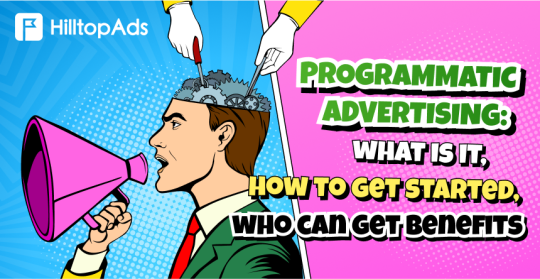
0 notes
Text
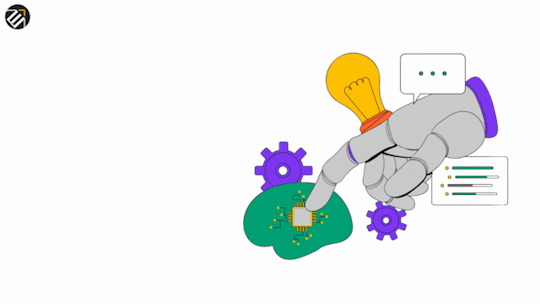
Programmatic Advertising in Kolkata | Programmatic Advertising Services | Programmatic Advertising Company in Kolkata
0 notes
Text
Programmatic Advertising: The Future of Digital Ad Buying
What is Programmatic Advertising?
Programmatic advertising has revolutionized the way digital ads are bought and displayed, replacing traditional manual processes with AI-driven automation. Unlike conventional methods that require negotiations and insertion orders, programmatic advertising uses real-time bidding (RTB) and machine learning to purchase ad space instantly across websites, apps, and streaming platforms. This technology allows advertisers to target specific audiences with precision while optimizing costs and eliminating inefficiencies.
At its core, programmatic advertising functions as an automated marketplace connecting advertisers and publishers. When a user visits a website, an auction occurs within milliseconds—advertisers bid for the opportunity to display their ad, and the highest bidder wins. The entire process happens before the webpage fully loads, ensuring seamless ad delivery. By removing human intervention, programmatic advertising enhances efficiency, reduces wasted ad spend, and ensures that ads reach the most relevant audiences at the right moment.
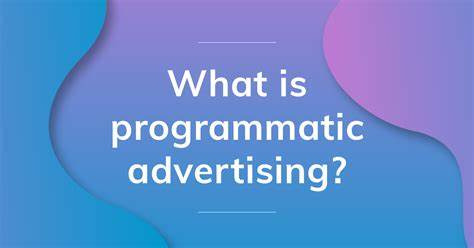
Key Features of Programmatic Advertising
1. Real-Time Bidding (RTB)
Programmatic advertising operates through instantaneous auctions where ad impressions are bought and sold in real time. As soon as a user loads a webpage, advertisers place bids based on the user’s profile, browsing behavior, and other data points. The highest bidder secures the ad placement, and the ad appears almost instantly. This dynamic process ensures maximum efficiency, allowing advertisers to reach their target audience with minimal delay and optimal cost-effectiveness.
2. AI & Machine Learning Optimization
Programmatic platforms leverage AI algorithms to analyze vast amounts of data, including user demographics (age, gender, location), browsing history, purchase behavior, and device type (mobile, desktop, tablet). By processing this information, machine learning models predict which users are most likely to engage or convert, enabling advertisers to bid more strategically. This data-driven approach minimizes wasted impressions and maximizes return on investment (ROI).
3. Cross-Channel Reach
One of the biggest advantages of programmatic advertising is its ability to run across multiple digital channels. Unlike traditional ads confined to a single platform, programmatic campaigns can appear on:
Mobile apps (games, news apps)
Connected TV (CTV) (Hulu, Roku, YouTube)
Digital Out-of-Home (DOOH) (smart billboards, transit ads)
Social media (via programmatic integrations) This omnichannel strategy ensures that brands maintain consistent visibility wherever their audience spends time online.
4. Advanced Audience Targeting
Programmatic advertising offers highly granular targeting options, allowing advertisers to refine their audience segments for better performance. Key strategies include:
Retargeting: Serving ads to users who previously visited a website but didn’t complete a purchase.
Lookalike Audiences: Targeting new users who share characteristics with a brand’s best customers.
Contextual Targeting: Placing ads on websites related to the product (e.g., sports gear on fitness blogs).
Geofencing: Delivering ads to users in specific geographic locations (e.g., near a retail store). These capabilities ensure that ads reach the most relevant users, improving engagement and conversion rates.
5. Transparent Performance Tracking
Advertisers gain access to real-time analytics, providing insights into:
Impressions (how many users saw the ad)
Click-through rates (CTR)
Conversions (sales, sign-ups, downloads)
Cost per acquisition (CPA) This transparency allows for continuous optimization, ensuring campaigns perform at their best.
6. Fraud Prevention & Brand Safety
Programmatic platforms incorporate AI-powered fraud detection to eliminate invalid traffic, including:
Bot traffic (fake clicks from automated scripts)
Ad stacking (multiple ads hidden in a single placement)
Non-human impressions Additionally, advertisers can blacklist low-quality websites to ensure their ads appear only on reputable platforms, protecting brand integrity.
Why is Programmatic Advertising Important?
1. Unmatched Efficiency
Traditional ad buying involves time-consuming negotiations and manual placements. Programmatic advertising automates the entire process, significantly reducing operational costs while improving speed and accuracy.
2. Precision Targeting
Instead of broadcasting ads to a broad audience, programmatic advertising focuses on high-intent users, increasing conversion rates and lowering customer acquisition costs.
3. Better ROI with Data-Driven Decisions
AI continuously analyzes campaign performance, adjusting bids and placements in real time to maximize results. Advertisers can quickly identify top-performing creatives and audiences, reallocating budgets for optimal efficiency.
4. Scalability
Programmatic advertising allows businesses to launch and scale campaigns globally with minimal effort. Adjusting budgets, audiences, and strategies can be done seamlessly without manual intervention.
5. Omnichannel Marketing
Unlike traditional ads limited to one platform, programmatic campaigns follow users across devices and channels, reinforcing brand messaging and improving recall.
6. Competitive Advantage
Brands that adopt programmatic advertising gain an edge over competitors still relying on manual ad buying, thanks to superior targeting, automation, and optimization.
Best Practices for Programmatic Advertising
1. Use First-Party Data
Leveraging customer data (email lists, past purchasers) allows for highly targeted campaigns, improving relevance and performance.
2. A/B Test Creatives
Running multiple ad variations (different images, headlines, CTAs) helps identify which versions resonate best with the audience.
3. Optimize for Viewability
Ensuring ads appear in visible placements (avoiding "below-the-fold" locations) increases engagement rates.
4. Monitor Frequency Capping
Repeatedly showing the same ad can lead to ad fatigue. Setting frequency limits ensures users aren’t overwhelmed.
5. Choose Premium Ad Exchanges
Partnering with reputable networks prevents ads from appearing on low-quality or fraudulent sites, maintaining brand safety.
The Future of Programmatic Advertising
Emerging trends shaping the industry include:
AI-powered predictive bidding (anticipating user behavior before they click)
Programmatic TV & audio ads (automated ad buying for streaming and podcasts)
Cookieless targeting (using AI and contextual signals instead of third-party cookies)
Interactive ads (shoppable banners, augmented reality experiences)
Conclusion
Programmatic advertising represents the future of digital marketing, offering unparalleled efficiency, precision, and scalability. By leveraging AI, real-time bidding, and cross-channel reach, advertisers can achieve higher conversions at lower costs compared to traditional methods. As technology evolves, programmatic advertising will continue to dominate the digital ad space, providing smarter, faster, and more effective ways to connect with audiences. Businesses that embrace this approach today will stay ahead in an increasingly competitive landscape. At coding nectar we help you build that leverage.
0 notes
Text
https://gotogroww.com/digital-advertising/
Digital Advertising Services
We specialize in crafting tailored strategies across multiple channels, including PPC, social media, programmatic, and mobile advertising, to effectively reach your target audience. Our approach is designed to maximize ROI, ensuring brand safety while driving measurable results that contribute to your brand's growth. Whether you're looking to increase brand visibility or expand your reach across digital platforms, our comprehensive marketing strategies will help you achieve your goals.
#Digital Advertising#Brand Visibility#PPC Campaigns#Social Media Ads#Programmatic Ads#Mobile Advertising#ROI Optimization#Multi-Channel Marketing
0 notes
Text
Decoding Your E-commerce Audience: Essential Insights for Achieving Success

In the bustling world of ecommerce, understanding your audience isn't just beneficial—it's crucial. Without a deep comprehension of who your customers are, what they need, and how they behave, even the most well-designed online store can struggle to achieve its full potential. In this article, we’ll explore the key insights necessary to decode your ecommerce audience and set your business on a path to success.
Know Your Demographics
The first step in understanding your ecommerce audience is to get a clear picture of their demographics. This includes basic information such as age, gender, location, income level, and education. Demographic data helps you segment your audience into specific groups, enabling you to tailor your marketing efforts more effectively.
Why Demographics Matter
Targeted Marketing: Knowing the age and gender of your audience can help you create more targeted advertising campaigns. For example, if your primary audience is young women, you might focus on social media platforms like Instagram or TikTok.
Product Development: Understanding the income levels and locations of your customers can inform your product pricing and shipping strategies. High-income customers in urban areas might prefer premium products with fast shipping, while budget-conscious shoppers might look for value deals.
Analyze Behavioral Data
Beyond demographics, it's essential to dive into the behavioral data of your customers. This involves examining how they interact with your website, what products they view and purchase, and how they respond to different marketing tactics.
Key Behavioral Insights
Browsing Patterns: Tools like Google Analytics can show you which pages your customers visit most frequently, how long they stay on each page, and where they drop off. This information can help you optimize your website’s user experience.
Purchase History: By analyzing past purchases, you can identify trends and patterns in buying behavior. This allows you to create personalized recommendations and marketing messages that resonate with individual customers.
Cart Abandonment: Understanding why customers add items to their cart but don’t complete the purchase can help you address potential pain points. Maybe your checkout process is too complicated, or your shipping costs are too high. Identifying these issues can lead to improvements that increase your conversion rates.
Leverage Psychographics
Psychographics delve deeper into the psychological aspects of your audience, including their interests, values, attitudes, and lifestyle choices. This level of understanding can significantly enhance your marketing strategies.
Applying Psychographic Insights
Content Creation: Knowing what interests and values your audience holds can help you create content that resonates deeply with them. If your audience values sustainability, for instance, content highlighting your eco-friendly practices can foster a stronger connection.
Brand Messaging: Your brand’s voice and messaging should align with your audience’s attitudes and lifestyle. For example, a brand targeting health-conscious individuals should emphasize wellness and healthy living in its communications.
Product Development: Insights into your audience’s lifestyle can guide the development of new products or features. If you discover a significant portion of your audience enjoys outdoor activities, you might expand your product line to include items suited for outdoor use.
Use Social Listening
Social listening involves monitoring social media channels for mentions of your brand, products, competitors, and relevant keywords. This practice can provide a wealth of information about your audience’s opinions and preferences.
Benefits of Social Listening
Real-Time Feedback: Social media offers instant feedback on your products and campaigns. Pay attention to what customers are saying and use this information to make timely adjustments.
Trend Identification: By keeping an eye on trending topics and hashtags, you can identify emerging trends that might be relevant to your audience. This allows you to stay ahead of the curve and offer products or content that align with current interests.
Competitor Insights: Social listening also gives you a glimpse into what your competitors are doing and how their customers are responding. This can inform your own strategies and help you find ways to differentiate your brand.
Conduct Surveys and Feedback
While data analytics and social listening provide valuable insights, sometimes the best way to understand your audience is simply to ask them. Conducting surveys and soliciting feedback can yield direct and specific information about customer preferences and experiences.
Effective Survey Strategies
Ask the Right Questions: Ensure your survey questions are clear and relevant. Focus on aspects of your business that you can control and improve, such as product satisfaction, website usability, and customer service.
Incentivize Participation: Offer incentives such as discounts or entry into a prize draw to encourage more customers to complete your surveys.
Analyze and Act: Collecting feedback is only valuable if you act on it. Analyze the results carefully and implement changes based on the insights gained.
Personalize the Customer Experience
Personalization is no longer a luxury but a necessity in today’s ecommerce landscape. Customers expect a shopping experience tailored to their preferences and behaviors.
Steps to Personalization
Segmentation: Use the demographic, behavioral, and psychographic data you’ve gathered to segment your audience into distinct groups. This allows you to create more targeted and relevant marketing campaigns.
Recommendation Engines: Implement recommendation engines that suggest products based on past purchases and browsing history. Personalized recommendations can increase average order value and improve customer satisfaction.
Dynamic Content: Use dynamic content on your website and in your email marketing to provide personalized experiences. For example, show different homepage banners or product suggestions based on the visitor’s previous interactions with your site.
Conclusion
Decoding your ecommerce audience is an ongoing process that requires continuous effort and adaptation. By understanding your audience’s demographics, behaviors, and psychographics, leveraging social listening, conducting surveys, and personalizing the customer experience, you can build stronger connections with your customers and drive your business towards greater success. The more you know about your audience, the better you can serve them—and in the competitive world of e-commerce, that understanding can be the key to standing out and thriving.
Stay ahead in the dynamic landscape of digital marketing at https://www.hopbug.com
#indonesia#jakarta#digitalmarketing#digitaladvertising#digitalagency#advertising#digitalmarketingagency#hopbug#hopbugmedia#performancemarketing#programmatic advertisement#programmatic marketing#programmatic ads#programmaticadvertising#e commerce
0 notes
Text
Programmatic Ads

Curious about programmatic ads? ODigMa is here to shed some light. Programmatic ads are a type of digital advertising in which ads are bought and placed in real time using automated technology. Advertisers can use this technique to target particular audiences and maximise the efficacy of their campaigns. Businesses can use ODigMa's expertise in programmatic advertising to leverage the power of automation to reach their target audience more efficiently and effectively.
0 notes
Text
Unlocking Programmatic Success: Online Advertising Course
The Programmatic Advertising Course Online is an innovative learning experience that offers access to an extensive library of over 450+ courses for all staff members. With engaging learning materials, the courses are compatible with all major browsers and devices, providing a convenient and flexible learning experience. The courses range from quick and easy 10-minute micro-learning video lessons to in-depth, 40-hour full courses for more comprehensive learning. The learning material is CPD approved, ensuring that the courses meet industry standards. New course material is added regularly to ensure that learners stay up to date with the latest industry trends. The program also offers 24-hour customer support and dedicated account managers, providing learners with the support they need to succeed. Overall, the Programmatic Advertising Course Online is an excellent opportunity for learners to enhance their skills and knowledge in the field of programmatic advertising and take their career to the next level.Here is the course link:https://lead-academy.org/course/programmatic-advertising

0 notes
Text
0 notes
Text
How Top Brands Are Winning with Programmatic Advertising
Why Brands are Embracing Programmatic Advertising?
Programmatic advertising has transformed the way brands interact with their target audiences by automating the buying and placement of ads with the help of powerful algorithms that provide precision, efficiency, and scalability. to increase the success rate which is lacking in traditional advertising.
Precise Targeting: Using precise targeting in programmatic ad marketers use data to identify target audiences. It allows brands to send modified messages based on demographics, activities, and even real-time intent.
Real-Time Optimization: Programmatic campaigns help in delivering real-time analytics, allowing brands to monitor performance and adjust the campaign according to their need. This enables marketers to optimize ad creatives, placements, and budgets in real-time, resulting in better results.
Scalability Across Platforms: Programmatic advertising connects people to a wide range of platforms, including social media and display networks, as well as connected TV and audio streaming services. This enables marketers to maintain the presence across several touchpoints without having any extra burden on managing individual channels separately.
Cost Efficiency: Traditional processes of buying and placement of ads can be time-consuming as they require negotiations and manual adjustments. With programmatic systems marketers can process millions of transactions in milliseconds, enabling brands to swiftly launch and adjust campaigns to close potential opportunities.
Programmatic Advertising in USA, UAE, India, Dubai, Saudi Arabia
Click here to read more about the Programmatic Advertising.
#programmatic advertising#programmatic ads#ad fraud#ad fraud solution#fraud detection#fraud detection solution#ad fraud detection#programmatic ad fraud detection
0 notes
Text
iCubesWire: Transformative Programmatic Advertising Solutions for Brands
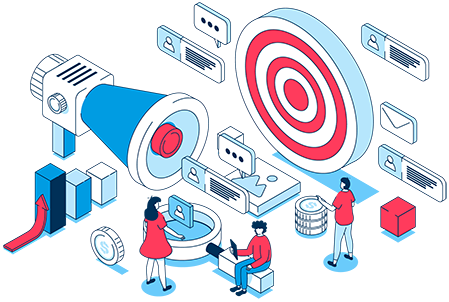
Experience the Future of Advertising with iCubesWire! Dive into the dynamic world of programmatic advertising, where creativity meets technology. Our powerful programmatic advertising platforms redefine digital marketing, delivering engaging programmatic ads, captivating display campaigns, and compelling video ads. Let your brand shine brightly, attracting the right audience and boosting conversions. Elevate your advertising game with iCubesWire!
#programmatic advertising#programmatic ads#programmatic advertising platforms#programmatic display advertising#programmatic video ads
0 notes
Text
Deep Impact with A Small Business. Possible?
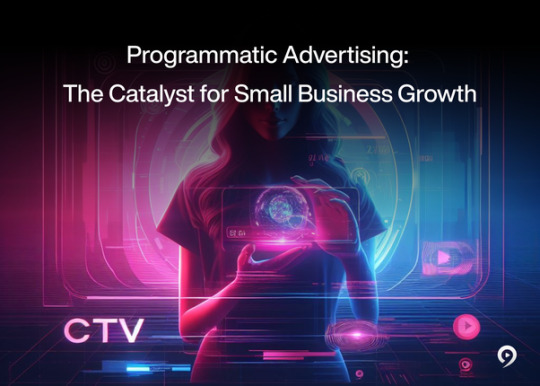
Yes! With Programmatic Advertising, you can create a significant impact with even a small business and a small advertising budget. Find out how!
Growing a small business can be difficult, especially in today's highly competitive economy. In marketing, there are an overwhelming number of jobs to complete and many components to manage, ranging from websites and blogs to advertising campaigns. The struggle is real! Small business owners must consider a wide spectrum of prospects while ensuring brand awareness and continuous consumer engagement. It's a challenging juggling act. However, deploying programmatic advertising can be a game-changer that sets your small business on a path to sustained growth.
So, what is programmatic advertising, and why should you care? We've gathered insights from programmatic experts to compile an essential guide for anyone seeking effective marketing strategies to boost their small business.
Exploring the World of Programmatic Advertising
Imagine shopping online and being guided by a digital assistant throughout the journey. If you've experienced this, you understand how a digital assistant simplifies the process by understanding your needs, suggesting the most suitable items, and helping you make informed choices. Programmatic advertising is akin to this digital assistant but in the realm of digital marketing. It comprehends your brand's objectives, persona, and goals to identify precise audiences to target, thus aiding your brand in reaching more potential customers.
In marketing terms, programmatic advertising automates the process of buying and selling digital ad space. This innovative approach employs algorithmic technology to purchase and sell advertising space. However, the term "programmatic" doesn't imply complete automation. As an advertiser, you still need to provide essential details like targeting, budgets, and your desired outcomes to ensure the software aligns with your business objectives.
Programmatic advertising opens doors to a vast array of inventory across the internet. It offers an extensive range of ad formats, including audio ads, connected TV, and video, which may not be available through other platforms like Google's Display Network (GDN). So, why should you consider this alternative?
Embracing Programmatic Advertising: The Bright Side
Diverse Ad Formats
Unlike more generic advertising methods that focus on immediate sales activation tactics, programmatic advertising adopts a more organic route. It excels in brand-building among the target audience. With a plethora of ad formats, including native advertising, display, video, and audio, it's an ideal choice for reaching a broader audience and building your brand's presence. The cost-per-thousand-impressions (CPM) model ensures you pay for impressions, making it perfect for brand-focused campaigns.
Premium Inventory
Programmatic advertising offers access to premium publishers that may not be available through GDN. You can set up direct offers with pinnacle publications in your industry, visibly improving your reach for a wider target audience. While programmatic and Google share some stock, you gain access to high-quality publications that GDN may not provide.
Efficiency in Targeting
When your small business is still growing, it's crucial to streamline processes to avoid wasting resources. Programmatic advertising executes this vision beautifully. Even though you'll still need to define your target audience, campaign objectives, and desired CPM targets, the platform handles the heavy lifting in terms of focusing management into a single platform, making it easier to oversee your advertising activities.
Unparalleled Reach and Scale
Programmatic platforms harness algorithmic ad-buying technology to reach a wider audience across different advertising exchanges. This transition from one-on-one ad buying to a one-to-many model is transforming the digital advertising landscape. In 2021, programmatic spending reached $105 billion and is predicted to grow continuously through the upcoming years. Depending on your business goals, algorithms will guide your spending to maximize results.
If you're still unsure about programmatic advertising, here's an interesting story to illustrate its potential.
Missing People: A British Charity Case Study in Programmatic Advertising
Missing People is a small British Charity dedicated to the mission of rescuing missing children across the UK. Around 2013, Missing People were faced with a gaping hole in their path to fulfill their mission. They realized their resources were limited, and their marketing budget was abysmal. The higher authorities of Missing People sought an innovative solution in the programmatic out-of-home (OOH) advertising industry.
But what is programmatic OOH?
By using data and automation, programmatic digital out-of-home (OOH) turns digital billboards, signs, and displays into ads that can be bought, activated, and even tailored to be displayed as and when they'll best connect with the right audience. Programmatic OOH makes ads nimble and location-specific, ensuring messages are relevant.
The Strategy
The charity started small, using a few sites alongside print for OOH appeals. With support from media owners, they transitioned to programmatic OOH, launching multiple location-specific appeals daily. Today, Missing People is the official charity of the OOH industry, receiving £10 million in advertising inventory.
Results
Programmatic OOH improved response rates, jumping from 50% to 70%, allowing them to reach those who missed print appeals.
The charity introduced the Child Rescue Alert system, similar to the US Amber Alert. They used real-time data to target commuters at Waterloo, resulting in 44,000 responses in one month, compared to 10,000 from a print campaign.
In summary, this case study shows how a small charity like Missing People turned the tide on limited resources and marketing budgets by embracing programmatic OOH. Their journey has not only significantly increased response rates but, more importantly, allowed them to continue their mission of reuniting families and finding missing children. It's a testament to the power of innovative thinking and technology in the world of charitable endeavors.
The Key to Successful Programmatic Campaigns to Boost Your Small Business
Unleash the Power of Customer Data
Customer data, or first-party data, is your goldmine to exploit for a supercharged digital marketing adventure. We cannot emphasize enough the importance of understanding your customers to make your marketing efforts more effective and impactful. Imagine reaching your audience with pinpoint precision and engaging them at just the right moment – that's the magic of customer data in programmatic advertising.
Even with a limited marketing budget, you can achieve precision targeting with the help of data gathered from different online and offline sources, including post-purchase emails, phone bookings, or your loyal customers' emails.
Driving Impressive Results
Small businesses are increasingly turning to customer-focused digital advertising to maximize their ROI. They aim to reach high-value customers, engage look-alikes, and optimize the customer journey. In a Forbes Insight and Turn survey, organizations leading data-driven marketing reported higher customer engagement and market growth. These leaders were three times more likely to see increased revenues compared to their slower counterparts.
With approximately 28 million small businesses in the U.S., many have untapped potential in their customer data. Today's data-driven strategies empower small businesses to target customers with highly relevant ads. It's not just about your ad being seen; it's about the right person seeing your ad at the right time. It's a game-changer, and the key to your marketing success is right at your fingertips – in your customer data.
Reach New Heights with Your Small Business
In conclusion, programmatic advertising offers small businesses an array of benefits, from diverse ad formats and premium inventory to efficient targeting and unparalleled reach. To thrive in today's competitive landscape, leveraging programmatic advertising and harnessing the power of customer data is essential. Just like Missing People, who used programmatic OOH to make a significant impact despite limited resources, your small business can achieve remarkable results with the right strategies. Embrace programmatic advertising to maximize growth potential while ensuring your brand reaches the appropriate people at the right time.
Don't let your small business fall behind in the rapidly changing world of digital marketing. Accept programmatic advertising, leverage your customer data, and watch your company soar to new heights of economic success. The tools are at your disposal; it's time to wield them effectively and lead your small business to a brighter and more prosperous future.
For Best Programmatic Advertising Services Contact Us
#advertising#marketing#programmatic advertising#programmatic ads#Ads#startupgrowth#businessgrowth#sales#branding#brandawarenes#brandawareness#business#business growth
0 notes
Text
Programmatic & Native Ads: A Comprehensive Guide to Modern Digital Advertising
The digital advertising landscape has transformed with the emergence of programmatic and native advertising—two highly effective strategies that enable brands to connect with their audiences more efficiently. Programmatic advertising automates the ad-buying process using AI, ensuring precision and cost-effectiveness. On the other hand, native ads integrate naturally into content, enhancing engagement by avoiding disruptive ad formats. Together, these methods provide businesses with a powerful way to optimize their marketing efforts, balancing performance and user experience.
This guide will cover:
The fundamentals of programmatic and native advertising
Their key characteristics and benefits
Why they are essential in today’s digital marketing strategies
Best practices for successful implementation

What Is Programmatic Advertising?
Programmatic advertising revolutionizes digital ad buying by using artificial intelligence (AI) and machine learning to automate the process in real time. Instead of relying on manual negotiations, advertisers leverage demand-side platforms (DSPs) to bid on ad space across websites, mobile apps, and social media platforms. This automation ensures that ads are delivered to the right audience at the right time, maximizing efficiency and ROI.
Key Features of Programmatic Advertising
Real-Time Bidding (RTB) Programmatic advertising operates through real-time auctions where ad impressions are bought and sold in milliseconds. Advertisers bid based on user data such as demographics, browsing history, and online behavior. This ensures that ads are displayed to the most relevant audiences while optimizing costs.
AI-Driven Audience Targeting Machine learning algorithms analyze user behavior to optimize ad delivery. Targeting can be based on interests, location, device type, and past interactions, ensuring that ads reach high-intent users while minimizing wasted impressions.
Cross-Channel Reach Programmatic ads can run across multiple platforms, including websites, mobile apps, connected TV (CTV), and social media. This omnichannel approach allows for retargeting users at different stages of their customer journey.
Advanced Analytics & Optimization Real-time tracking of impressions, clicks, conversions, and ROI enables continuous optimization. The system automatically adjusts bids and placements to maximize campaign performance.
Fraud Prevention AI-powered fraud detection tools identify and block invalid traffic, such as bot clicks, ensuring that ads are viewed by real users.
Why Programmatic Advertising Matters
Efficiency: Automates the ad-buying process, saving time and resources.
Precision Targeting: Reaches users most likely to convert, improving campaign effectiveness.
Scalability: Runs campaigns across multiple platforms simultaneously.
Cost-Effectiveness: Optimizes bids to reduce wasted ad spend.
What Are Native Ads?
Native ads are designed to blend seamlessly with the platform’s content, making them appear less intrusive than traditional banner or pop-up ads. They match the visual style and tone of the surrounding content, enhancing user engagement. Examples include sponsored articles on news sites, in-feed social media promotions, and recommended content widgets.
Key Features of Native Ads
Seamless Integration Native ads mimic the format and design of the platform they appear on, making them feel like organic content rather than advertisements. Examples include Facebook’s sponsored posts or promoted product listings on e-commerce sites.
Higher Engagement Rates Studies show that native ads receive 53% more views than traditional display ads. Because they don’t disrupt the user experience, they are less likely to be ignored or blocked.
Content-Driven Approach Instead of direct selling, native ads focus on providing value through informative or entertaining content. Examples include branded tutorials, industry reports, or influencer collaborations.
Trust & Credibility Since native ads align with reputable publishers, they enhance brand credibility. Consumers perceive them as less promotional and more trustworthy.
Platform-Specific Variations
In-Feed Ads (Facebook, Instagram, LinkedIn)
Content Recommendations (Outbrain, Taboola)
Sponsored Listings (Amazon, Etsy)
Why Native Ads Matter
Improved User Experience: Less intrusive than traditional ads, leading to better reception.
Higher Click-Through Rates (CTR): Blends naturally, encouraging more interactions.
Brand Lift: Enhances brand perception by delivering valuable content.
Multi-Device Optimization: Works effectively across mobile, desktop, and tablets.
Programmatic vs. Native Ads: Key Differences
While both strategies enhance digital advertising, they serve different purposes:
Programmatic Ads focus on automating ad buying for efficiency, using real-time bidding and AI-driven targeting. They are ideal for performance marketing, retargeting, and large-scale campaigns.
Native Ads prioritize engagement by blending into content, making them perfect for brand awareness and content marketing.
How to Combine Programmatic & Native Ads for Maximum Impact
Retargeting with Programmatic Native Ads Use programmatic platforms to serve native-style ads to users who previously visited your website. For example, a travel agency can retarget users with a sponsored article about "Top Travel Destinations."
Amplifying Content Marketing Promote high-value content (e-books, whitepapers, videos) through native ads using programmatic targeting. A B2B company, for instance, can use LinkedIn native ads to distribute an industry report.
Balancing Performance & Branding Use programmatic ads for direct-response goals (sales, leads) while leveraging native ads for top-of-funnel brand awareness (blog posts, influencer content).
AI-Powered Optimization Programmatic tools can optimize native ad placements by analyzing engagement data. A/B test different headlines, images, and CTAs to refine performance.
Best Practices for Success
For Programmatic Ads:
Leverage first-party data (email lists, website visitors) for precise targeting.
Set frequency caps to prevent ad fatigue.
Choose premium ad exchanges to maintain high-quality placements.
For Native Ads:
Focus on value-driven content rather than overt promotion.
Adapt to platform tone (casual for Instagram, professional for LinkedIn).
Test different formats to determine what resonates best with your audience.
Conclusion
Programmatic and native advertising represent the future of digital marketing—combining efficiency, engagement, and measurable results. Programmatic excels in automated, data-driven ad buying, while native ads enhance user experience by blending naturally into content.
By integrating both strategies, businesses can achieve a balanced approach—driving conversions through programmatic while building brand trust with native ads. Start by experimenting with programmatic native ads, refining audience targeting, and delivering high-quality content to maximize your advertising success.
Ready to elevate your ad strategy? Test programmatic and native ads to discover the best approach for your marketing goals With Coding Nectar.
0 notes
Text
#programmatic advertising#programmatic ads#programmaticadvertising#programmaticads#advertising#marketing
1 note
·
View note
Text
In 2023, explore an extensive collection of channels for programmatic advertising. This article breaks down 7 essential platform types that are impacting the digital advertising industry.
Stay aware with the most recent developments and trends in programmatic advertising tactics.
0 notes
Text

Best programmatic advertising | Banyanbrain
Programmatic advertising automatically purchases ad inventory for targeting and optimization in real time. Banyanbrain's programmatic advertising expertise enables businesses to target specific audiences across multiple platforms with precision. Employing insights and technology in a data-driven approach, Banyanbrain allows clients to enhance ad performance, increase engagement, and attain higher conversion rates through smarter automated campaigns.
0 notes